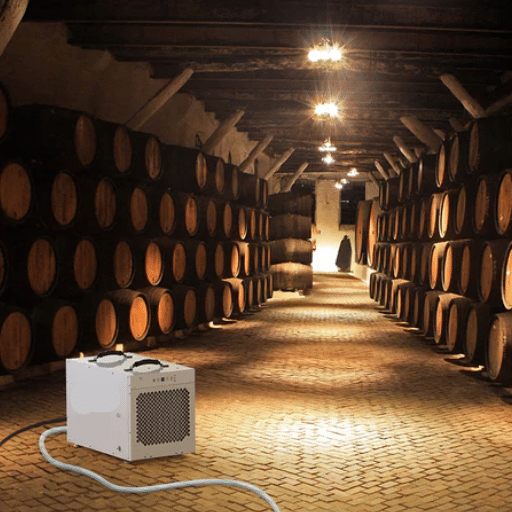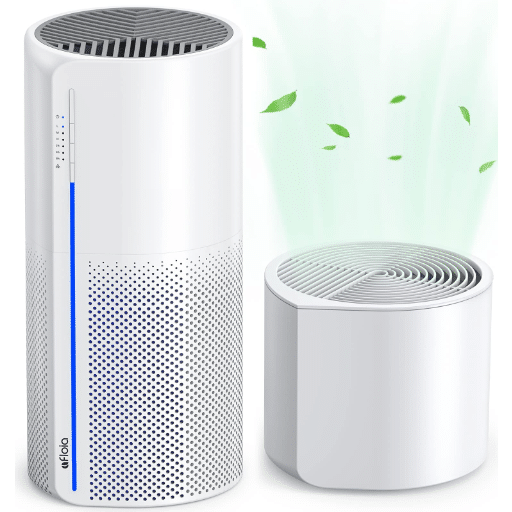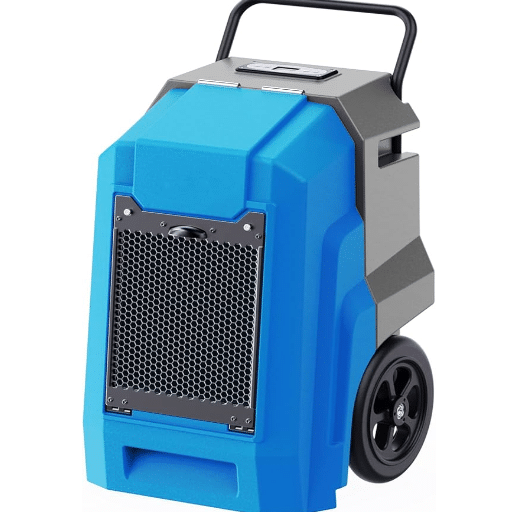A damp environment can spawn problems such as mold spoilers, discomfort, and even financial loss. Dehumidifers are essential to removing excessive humidity from the atmosphere which helps in mold growth mitigation, along with keeping the indoor environment healthy. On that note, have you stopped to consider how dehumidifiers function?
This article will look into the components of a dehumidifier and explain every part of the device and the processes that it goes through to operate. There are many kinds of dehumidifiers available for different needs, and each has its unique advantages for home use. After reading this, you will have a complete picture of how these devices function, their significance in controlling air quality indoors, and therefore, their practicality and scientific reasoning will also be unveiled.
What is the basic principle behind a dehumidifier’s operation?
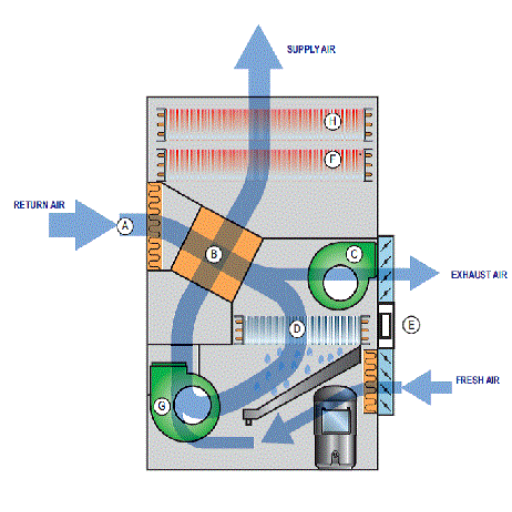
In a nutshell, dehumidifiers work by removing excess water from the air using a ventilation system that cools it down in order to condense moisture and then reheat it before releasing it back into the environment. Using this method, water is collected in a reservoir in a clean and tidy manner and the humidity is then optimally balanced, making the air much more enjoyable.
Understanding the process of removing moisture from the air
- Air Intake: Air is drawn into the dehumidifier using a fan. This ensures a consistent flow of air through the device.
- Technical parameter: Typical air intake flow rate ranges between 100-500 cubic feet per minute (CFM), depending on the size of the dehumidifier.
- Cooling and Condensation: Inside the dehumidifier, the air passes over refrigerated coils to lower its temperature. This causes the moisture in the air to condense into liquid water.
- Technical parameter: The coil temperature is typically between 32°F and 50°F to ensure effective condensation.
- Moisture Collection: The condensed water droplets are collected in a reservoir or drained via a hose. Many units include an automatic shut-off to prevent overflow.
- Technical parameter: Reservoir capacity often ranges from 1 pint to 70 pints, correlating with the device’s daily moisture removal capability.
- Air Reheating & Release: The dehumidified air is reheated using the heat exchange system, ensuring it is warm and comfortable before being released back into the room.
- Technical parameter: Reheating temperatures are adjusted for efficiency, maintaining comfort without heating the space excessively.
By maintaining these parameters, dehumidifiers effectively reduce humidity levels to ideal ranges of 30%-50% relative humidity, promoting a healthier and more comfortable indoor environment.
How does a dehumidifier differ from an air conditioner?
Both a dehumidifier and an air conditioner can control the atmosphere of the room but each appliance has its functionality. The focus of air conditioning is to cool the space while dehumidification is a secondary effect subsumed under moisture extraction. Warm, moist air tends to extract moisture suspended within it when mixed with cold coils, creating condensation. A dehumidifier collects the water from the air to reduce humidity levels in the atmosphere. A dehumidifier is the best option because it does not use cold air to remove moisture. An air conditioner, however, is better suited for an environment that needs cooler temperature and moisture condensation simultaneously. The solution that you choose depends upon the requirement such as losing more moisture or creating cooler atmospheric conditions.
The role of condensation in dehumidification
As I discussed before, condensation assists in dehumidification by removing humidity in the air. We collect and condense water vapor by cooling warm moist air with water coils, so that the water can be easily stored and devoided of further condensation. This process is a representation of how water droplets form around a cool drink on a humid day. Dehumidifiers condense air allowing for water vapor to be extracted from the air. The air which would have otherwise been overly humid is now drier and far more pleasant owing to extreme reduction in freezing temperatures.
What are the main components of a dehumidifier and their functions?
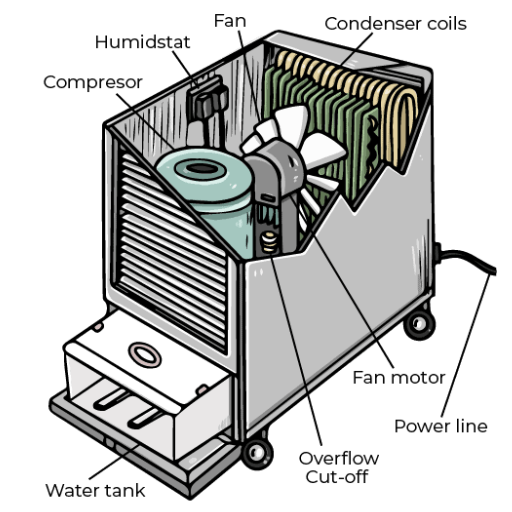
- Compressor: The compressor powers the refrigeration cycle, compressing and circulating the refrigerant to facilitate the cooling process that condenses moisture in the air.
- Evaporator Coil: This coil cools the incoming air, causing the moisture to condense into water droplets that can be collected.
- Condenser Coil: The condenser coil reheats the air after dehumidification to release it back into the environment at a comfortable temperature.
- Fan: The fan draws moist air into the dehumidifier and pushes the treated air out, ensuring continuous circulation.
- Water Collection Tank or Drainage System: The collected water from the air is stored in a tank or expelled via a drainage system.
- Humidistat: This device monitors the room’s humidity level and helps maintain the desired moisture level by controlling the operation of the dehumidifier.
Each of these components plays a vital role in effectively reducing humidity and creating a more comfortable indoor environment.
The importance of the cold coil in moisture removal
The cold coil is significant in the moisture removal operation of a dehumidifier. Its main job is to cool the warm, moist air presented to it below its dew point temperature so that the water vapor in the air condenses into liquid. It collects the water formed and the water can be either stored in a tank or drained away.
On a more technical note, the cold coil is within the range of 40 degrees and 50 degrees, in Fahrenheit, for condensation to occur. This range is ideal considering that the coils do not freeze while moisture is extracted. This is also dependent on the performance of the cold coil which is further affected by the surface area of the cold coil and the degree of thermal conductivity. Adding more surface area to the coil or making it more thermally efficient helps condensation to occur. Hence, the cold coil should be in a functional state to attain the desired humidity levels and performance of the dehumidifier.
How does the fan system circulate air through the device?
The fan system of a dehumidifier is important for taking in moist air and circulating it. It works when air moves in from an intake direction and then passes over the cold coil where moisture present in the air is condensed and collected. The fan also helps to push out dry air after it has been dehumidified; thus, completing the cycle. The fan’s motor power, speed, and design affect the efficiency of these processes contributing to a smooth circulation of the air and in turn, enhancing the results of the dehumidifier. This circulation dramatically increases the humidity control efficiency of a dehumidifier and the surrounding environment.
Understanding the collection tank and drainage options
The collection tank in a dehumidifier is where the extracted water from the air is stored, in a container called a reservoir. The tank’s capacity ranges from model to model and is usually within 0.5- 2 gallons. Smaller tanks are easier to fill, but because they have to be emptied more frequently, they are suited for the particular environment while bigger tanks are more efficient in greatly humid areas because of how long they can be used. Most dehumidifiers come equipped with a full-tank indicator and an automatic shut-off feature that prevents overflow after the tank is full.
To make tasks easier, most dehumidifiers have drainage features. One common type is gravity drainage where a hose is connected to the unit so water can drain directly to a designated area nearby. This method requires that the dehumidifier be placed above the drainage point. For more flexibility, some models include a built-in pump for continuous drainage, which allows water to be pumped vertically or farther away, such as into a sink or out a window. When selecting a drainage method, think about the hose length that is supplied (often 6-10 feet) and if the pump has enough power to the lift height of 10-15 feet, which is the average required height. These features ensure hassle-free operation, catering to various users and space configurations.
How long does it take for a dehumidifier to dry out a room?
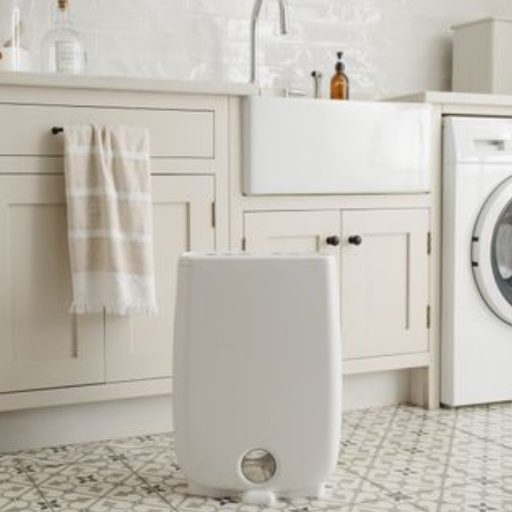
The duration needed by a dehumidifier to effectively dry a certain area varies from a few hours to a whole day and is dependent on the room’s dimensions, humidity levels, airflow efficiency, as well as the size of the dehumidifier. Typically, standard dehumidifiers reduce moisture levels by a significant margin within a few hours and in extreme humidity conditions, they can take an entire day. However, larger rooms or spaces with poor ventilation may require more time. To improve the drying process, make sure that windows and doors are closed and provide the dehumidifier with the appropriate moisture level for the room’s size.
Factors affecting dehumidification time
There are a few aspects that dictate how long it takes to efficiently dehumidify a space. To start, a room’s size is perhaps the most important of the considerations—larger spaces inherently require longer periods to bring down humidity levels. Second, a room’s current humidity also affects how long dehumidification will take; a very moist room will take longer for the dehumidifier to get to the desired amount. Third, the capacity of the dehumidifier is also a very important factor. Units with a higher capacity can pull more moisture out in a much shorter time which is useful in large spaces or places with intense humidity. Finally, the level of ventilation also affects the process. Spaces with low ventilation tend to keep moisture longer, so providing appropriate air circulation or sealing the room during dehumidification can make a substantial difference.
Setting realistic expectations for moisture removal
I closely monitor multiple considerations when discussing reasonable goals for moisture removal. First, I remember that even the most advanced dehumidifiers take time to work; optimum results can only be achieved after several hours or days of operational time, depending on the dimensions and humidity levels of the room. Second, there is the matter of the quantity of humid air that my dehumidifier can process; a powerful unit may take a long time to show significant results in larger areas in extreme dampness. Finally, I take note that proper ventilation and sealing of the space during dehumidification can dramatically enhance the effectiveness of the process. These factors undoubtedly require patience, but will ensure the best results.
What are the benefits of using a dehumidifier in your home?
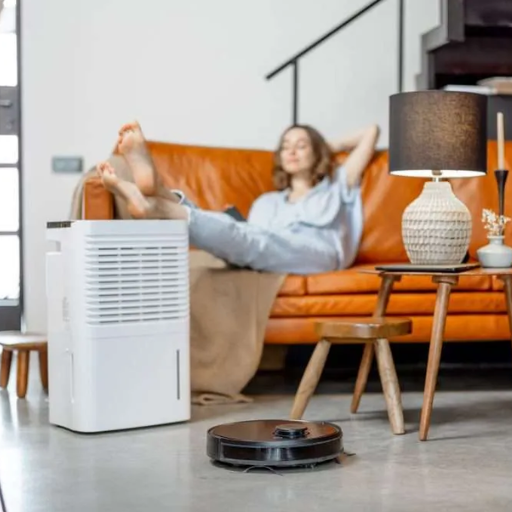
Keeping a dehumidifier in your house has plenty of advantages including improving the quality of air inside the house and making the living environment much healthier. Dehumidifiers can inhibit mold and mildew growth which can cause health problems like allergies and breathing issues. Decreased humidity also makes the house less favorable to dust mites and certain insects, which is more sanitary. Aside from health benefits, dehumidifiers can also aid in reducing moisture damage to walls, furniture, and electronics, which improves the structural soundness of the house. Dehumidifiers also increase comfort levels by alleviating the clammy feeling associated with high levels of humidity, while preventing damp odors.
Improving indoor air quality and comfort
To enhance comfort and air quality indoors, several strategies can be employed. First, proper ventilation is necessary for the introduction of air from outside and for lessening the concentration of indoor pollutants. This is done by the use of exhaust fans, opening windows, or mechanical ventilation systems in places where there is a lot of moisture such as bathrooms and kitchens.
Secondly, the use of HEPA-filter air purifiers can dramatically cut down airborne contaminants like pollen, dust, and pet dander which is very helpful for allergies and asthma sufferers. Clean air filters on HVAC systems enable efficient air circulation and lessen contaminant concentration within habitable areas.
Lastly, it is good practice to keep indoor humidity levels at or below 30-50%. If humidity is out of balance, humidifiers or dehumidifiers may help. This range is not only comfortable but also helps reduce dust mites and mold spores. Spider Plants and peace lilies are examples of indoor plants that are known to aid in making the room fresh and comfortable through the means of air purification.
Preventing mold and mildew growth
Applying proper ventilation and moisture control techniques is an effective way to prevent the growth of mold and mildew. To tackle excess humidity, it is important to seal any roof, pipe, or wall leaks as mold can grow in damp environments. Use exhaust fans in bathrooms, laundry rooms, and kitchens to remove moist air, and HVAC systems or open windows can help improve ventilation when weather permits.
The indoor humidity level can be monitored with a hygrometer and should be kept between 30-50% as advised by the Environmental Protection Agency (EPA). If humidity remains above this for extended periods, a dehumidifier or air conditioner can create a better balance. Additionally, applying waterproof seals on walls and floors can further protect areas prone to dampness such as basements or crawl spaces.
Cleaning and inspecting mold-prone areas, such as shower walls, window sills, and beneath sinks should be done regularly. Detergent and water mixtures work well, and a 1 cup bleach: 1-gallon water solution can help eliminate any mildew. Furthermore, wet towels and clothes should not be left piled up to avoid creating the perfect environment for spores to spread.
Lastly, during renovations and repairs, it may be a good idea to consider the use of mold-resistant products such as sealants, paints or even building materials. These products help prevent the development of mold and improve the well-being of your home in the long run.
Reducing energy costs by supporting air conditioning systems
In order to tackle energy costs while effectively aiding air conditioning, I apply a few different techniques. First, I make sure my HVAC systems are cleaned properly. This includes cleaning or replacing air filters every one to three months. This helps the system to run efficiently and keeps it from unnecessary excessive work. Second, I set the thermostat to a specific value lower than the outside temperature when I am not at home to avoid wasteful cooling. Third, I make some efforts to seal the house by insulating windows and doors to save cool air from escaping. Finally, I assist my air conditioning system by using electric fans to circulate air around the room, and by closing the curtains or blinds to reduce sun rays coming into the room. With this set of measures, I am comfortable while saving energy.
How do you choose the right dehumidifier for your needs?
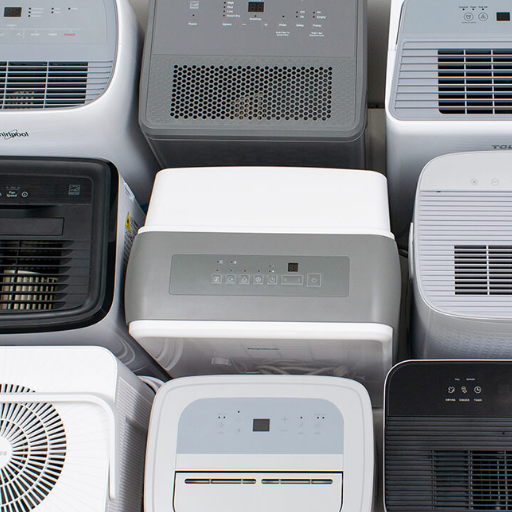
The classification of dehumidifiers is rather broad, so the selection may be tricky. To begin, you need to estimate the scope of space needing dehumidification—higher capacity units measured in pints per day are necessary for larger spaces. Then, look into the level of humidity in your surroundings; primary-powered models are likely to be necessary for excessively damp areas such as basements. Other conveniences like built-in humidistats, auto shut-off, or continuous drainage add to the convenience factor of the dehumidifiers. The desaturating unit’s energy efficiency needs to be checked to minimize the operational costs as well as determine how well the unit fulfills the requirements. Lastly, if you want to relocate the dehumidifier from one room to another, then the portability of the unit must be considered.
Assessing your space and humidity levels
Begin estimating your space and humidity levels by calculating the square footage of the area you wish to dehumidify. For spaces under 500 square feet, a small capacity dehumidifier of about 20 – 30 pints per day may be sufficient. In contrast, larger spaces over 1500 square feet may benefit from a more high capacity unit of around 50 – 70 pints per day. Use a hygrometer to assess the humidity in your space; anything above 60% is excessive and places you at risk for mold growth or odors. In the case of overly damp locations such as bathrooms or basements, a high-capacity dehumidifier with features such as continuous drainage is often necessary. A basic understanding of these factors helps you select a device that will balance the moisture levels in the air for your comfort.
Comparing portable and whole-house dehumidifiers
In choosing between portable versus whole-house models, I viewed the available options through the lens of my budget, the area in need of dehumidifying, and overall practicality. Portable air dehumidifiers are the most cost-effective, take up the least amount of space, and are most effective in fitting rooms with specific, smaller cases of humidity. They are often moved around easily with little, and in some cases, no installation is required. However, a manual drain is necessary more often than not, unless the unit has a continuous drain option. Whole-house versions, on the other hand, are used when a home needs integrated and extensive moisture control. These units often install to the HVAC units already in place making them easy to use for people who want minimal maintenance. However, both the initial cost and needing professional installation make this option much more expensive. In the end, wide-area control of humidity with portable units is useful, while extensive and long-term control of humidity is more effective with whole-house units.
Energy efficiency considerations when selecting a dehumidifier
In analyzing the efficiency of dehumidifier energy usage, specific Key Performance Indicators (KPIs) that need to be measured include award recognition by Energy Star, the amount of power used, and the rated capacity of the dehumidifier. Dehumidifiers that have an Energy Star certification are claimed to cut down on energy expenses without losing effectiveness. Always check for lower wattage and greater moisture removal rate.
Technical Parameters to Consider:
- Energy Factor (EF): A term of Unit measure like a liter(kilogram) harvested for every kilowatt hour (L/kWh), the greater the value the more energy efficiently is utilized. The suggested EF value for a residential dehumidifier is 1.5 L/kWh for maximum residential use.
- Capacity: This value should correlate with a space’s size. For instance, a 30-pint dehumidifier is recommended for spaces ranging between 500 to 1,500 square feet and 70-pint units for up to 2,500 square foot area.
- Continuous Drainage Option: Alleviates the user’s manual work increasing operational efficiency.
If you have these technical details in mind together with energy-efficient models, you will still be able to control humidity with low energy use.
References
Frequently Asked Questions (FAQ)
Q: How does a dehumidifier work to remove moisture from the air?
A: Dehumidifiers work by drawing in humid air, cooling it to condense the moisture, and then reheating and releasing the drier air back into the room. This process helps to pull moisture from the air, reducing humidity levels.
Q: What are the different types of dehumidifiers available?
A: There are mainly two types of dehumidifiers: refrigerant (or compressor) dehumidifiers and desiccant dehumidifiers. Refrigerant dehumidifiers use a cooling coil to condense moisture, while desiccant dehumidifiers use a moisture-absorbing material to remove moisture from the air.
Q: When do you need a dehumidifier in your home?
A: You may need a dehumidifier if you notice signs of excessive moisture, such as mold growth, condensation on windows, or a musty smell. A dehumidifier can help maintain optimal humidity levels, improving air quality and comfort.
Q: How does a whole-home dehumidifier differ from a portable unit?
A: A whole-home dehumidifier is integrated into your home’s HVAC system, controlling humidity throughout the entire house. In contrast, a portable dehumidifier is designed to handle moisture in a specific area or room.
Q: What is the role of relative humidity in operating a dehumidifier?
A: Relative humidity measures the amount of moisture present in the air compared to the maximum amount the air can hold at a given temperature. Dehumidifiers help maintain a comfortable relative humidity level, typically between 30-50%, to prevent mold and mildew.
Q: How often should you run a dehumidifier for optimal results?
A: You should run a dehumidifier as needed to maintain a comfortable relative humidity level. In damp conditions, you may need to run it continuously, whereas in drier conditions, intermittent use may suffice.
Q: Can a dehumidifier also cool the air in a room?
A: While a dehumidifier can help cool the air slightly by removing excess moisture, its primary function is not cooling. However, by reducing humidity, it can make the air feel cooler and more comfortable.
Q: What maintenance is required to keep your dehumidifier running efficiently?
A: Regular maintenance includes cleaning or replacing the air filter, emptying the water collection bucket, and ensuring the coils are free of dust. Proper maintenance ensures the dehumidifier can help reduce humidity effectively.
Q: Is professional dehumidifier installation necessary for a whole-home system?
A: Yes, professional installation is recommended for a whole-home dehumidifier to ensure it is correctly integrated with your HVAC system for optimal performance and efficiency.

